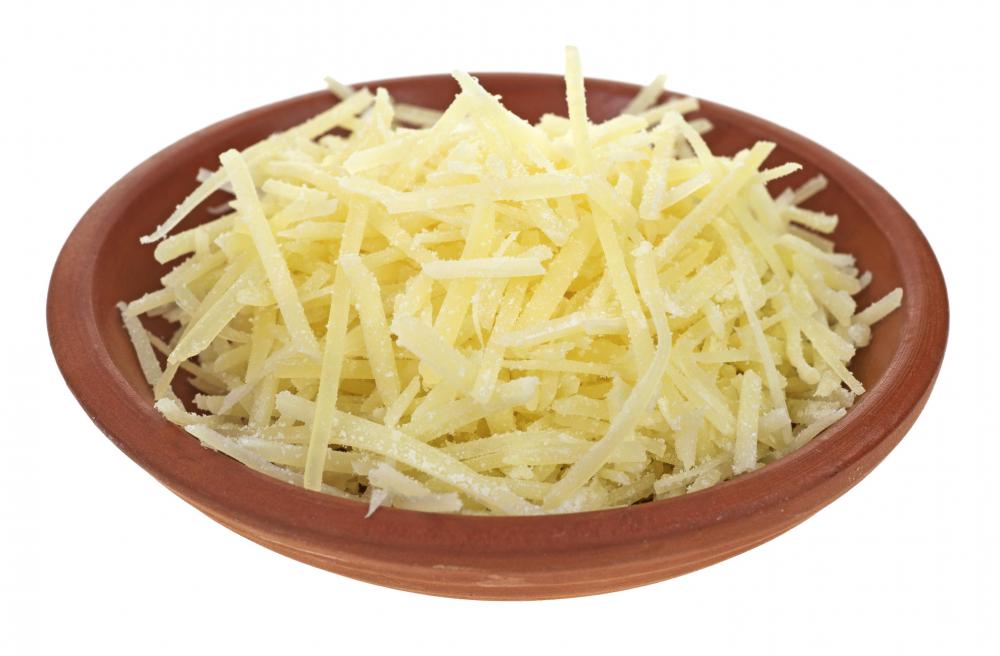At WiseGEEK, we're committed to delivering accurate, trustworthy information. Our expert-authored content is rigorously fact-checked and sourced from credible authorities. Discover how we uphold the highest standards in providing you with reliable knowledge.
What is Lactobacillus Bulgaricus?
Lactobacillus bulgaricus is the common name for Lactobacillus delbrueckii subspecies bulgaricus. It is a type of bacteria known for its ability to chemically convert lactose, a sugar in milk, to lactic acid. The acid-creating bacteria are responsible for the tart taste and creamy texture of yogurt and other fermented milk products.
Scientists believe that Lactobacillus bulgaricus is plant-derived because it naturally thrives on the branches and leaves of some plants. The primary way in which humans ingest the bacteria is through fermented dairy products. These include yogurt and such cheeses as mozzarella, provolone, Parmesan, Romano, and Swiss.

Yogurt is produced by treating milk with lactic-acid-creating bacteria. Lactobacillus bulgaricus and Streptococcus thermophilus are often used together because they ferment better together than they do separately. They are thermophilic bacteria, meaning that they thrive in warm environments. Yogurt is typically made by heating milk and bacteria at 104-113°F (40-45°C). Once the desired acidification is achieved, the mixture is quickly cooled to stop lactic acid formation.
The chemical reactions induced by fermentation cause milk proteins to coagulate, or clump together. This produces the thick pudding-like texture of yogurt. The lactic acids created by the bacteria cause yogurt to taste sour or tart.

Three bacteria—Lactobacillus bulgaricus, Streptococcus thermophilus, and Lactobacillus helveticus— are commonly used together to produce mozzarella, provolone, Parmesan, Romano, and Swiss cheeses. Additional bacteria species are added to Swiss cheese to obtain the desired flavor and texture. There are many cheese-making methods; in general, however, a milk and bacteria mixture is heated to achieve the desired acidification level. An enzyme called rennet, or chymosin, is added to convert the liquid to a semi-solid consistency. The solids, or curds, are drained and further treated to become cheese.

The human gastrointestinal tract, or gut, is populated by beneficial bacteria called probiotics that chemically convert sugars and other carbohydrates into acids. This acidic environment discourages the growth of unhealthy bacteria that cause sickness and disease. Lactobacillus bulgaricus is a transient probiotic. It does not permanently reside in the gut, but benefits the gut environment as it passes through the gastrointestinal system.

Lactobacillus bulgaricus is believed to ease lactose intolerance, which is the inability to digest lactose, the sugar found in milk and milk-derived products. In the gut, lactose is broken down by an enzyme called lactase. People with a lactase deficiency experience gastrointestinal symptoms, such as diarrhea, cramps, and bloating, after ingesting lactose. As Lactobacillus bulgaricus also breaks down lactose, the bacteria may relieve or reduce these symptoms in lactose intolerant people.
AS FEATURED ON:
AS FEATURED ON:
















Discuss this Article
Post your comments